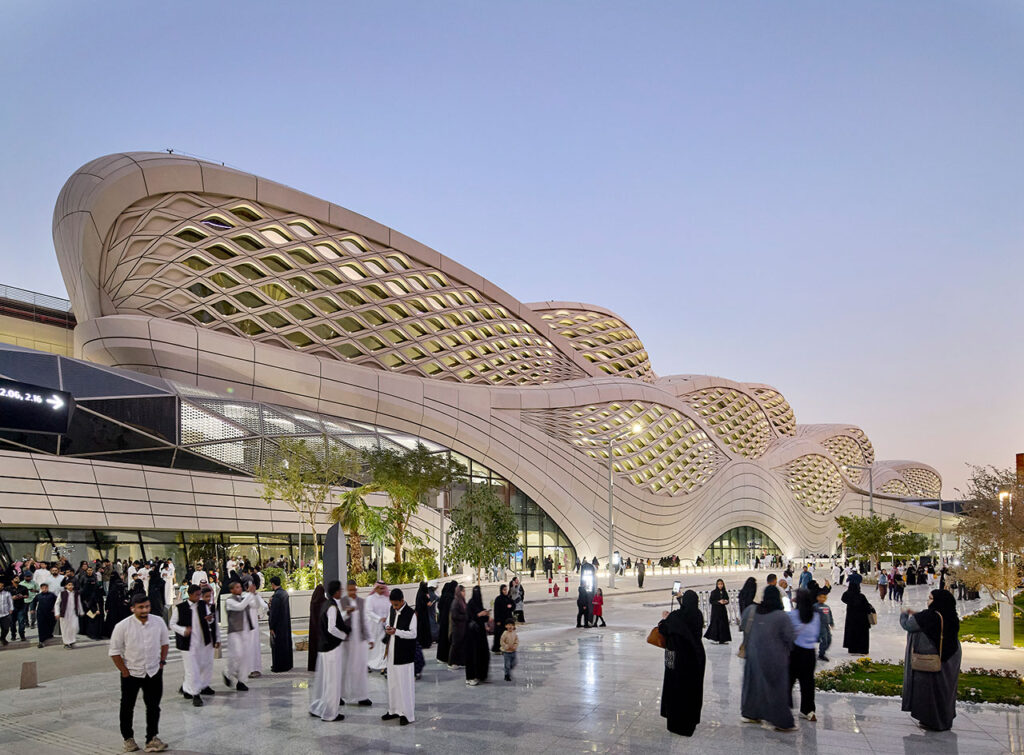A striking blend of futuristic design and advanced transit planning has emerged in Riyadh, where Zaha Hadid Architects has redefined public transportation with the King Abdullah Financial District (KAFD) Metro Station. As part of the massive Riyadh Metro project, this architectural landmark plays a pivotal role in a transformative network set to reshape urban life in Saudi Arabia’s capital.
The Riyadh Metro system, developed by the Royal Commission for Riyadh City, stands as the globe’s longest automated rail network, stretching across more than 176 kilometers. With six lines and 85 stations, the system connects key destinations across the city, addressing growing urban demands with an environmentally conscious approach. At full capacity, the network is expected to accommodate up to 3.6 million passengers daily, helping to cut reliance on private vehicles and ease city-wide congestion.

Strategically situated within the bustling KAFD, the station designed by ZHA functions as a central hub that links air travel, metro lines, and local monorail services. Its location enables fluid movement between Riyadh’s financial core and King Khalid International Airport, while also offering easy access to nearby bus connections and walkable public spaces.
What sets the KAFD station apart is its sculptural and performance-driven architecture. ZHA’s design draws on patterns of movement – both human and environmental – to shape the structure’s layout and skin. The core design features a three-dimensional matrix of flowing forms inspired by traffic modeling, where undulating sine waves reflect the station’s pulse throughout the day. These dynamic lines influence both internal circulation and the rhythm of the external cladding.
The facade comprises precision-cast concrete panels, serving a dual purpose: it delivers a distinctive aesthetic and moderates the desert climate. The perforated outer shell takes cues from traditional Middle Eastern shading techniques, reinterpreting them through a contemporary lens. The result is a surface that not only reduces heat gain but also mirrors the intricate patterns etched into desert landscapes by shifting sands and winds.
Internally, the station is arranged across four levels and includes six platforms, creating a seamless multi-modal experience for commuters. ZHA’s meticulous design process prioritized functionality as much as form – balancing spatial elegance with structural efficiency. Elements such as passive cooling strategies, energy-efficient systems, and responsive climate controls contribute to a significantly reduced carbon footprint.
In recognition of its environmental credentials, the KAFD Metro Station has been awarded LEED Gold certification, a testament to the design’s sustainability and innovation. This achievement aligns with the broader vision of the Riyadh Metro to promote green infrastructure while meeting the transportation needs of a rapidly expanding urban population.
In the first 11 weeks alone, over 18 million passengers used the station, which is now a symbol of Riyadh’s ambition to harmonize cutting-edge architecture with sustainable urban growth. The KAFD Metro Station exemplifies how thoughtful design can elevate everyday experiences, transforming routine travel into an encounter with visionary urbanism.
To learn more about Zaha Hadid Architects, visit zaha-hadid.com.
Photography courtesy of © Hufton+Crow.
Read the full article here



